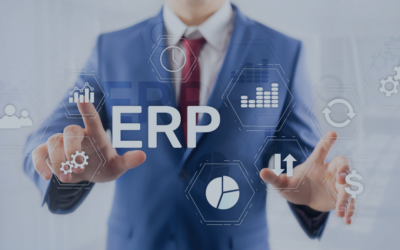The predominating argument between a CFO and the CTO trying to convince him to approve migration to a cloud ERP will almost always be about cost. A big factor that is always taken into consideration for any major business decision is how much it will cost, and if the benefits will outweigh and eventually cover the investment made.
Cloud vendors will often try to push the narrative that cloud-based ERP’s cost less and will save your business money. While this may be true for many companies, it’s not an absolute truth for every scenario. The truth is that ERP cost is more complex than just one figure. For example, Total Cost of Ownership (TCO) is more relevant than the upfront implementation costs and must be projected for the long-term. In some cases, where a lot of customization is needed, moving to the cloud may end up being the more expensive solution. In today’s blog, we’d like to explore four different factors that must be taken into consideration when making a cost comparison between Cloud and On-Premise ERPs.
Those factors are:
- Technology Lifespan
- Downtime Cost
- Customization
- Total Cost of Ownership
Technology Lifespan
Anyone who has a box of dusty VHS cassettes somewhere in the attic knows for a fact that every technology has a finite lifespan. You might keep them around for sentimental value, but that technology has run its course and isn’t coming back. The same happens in the business environment; Rolodexes, typewriters, and fax machines are all examples of technology that has been replaced by something more efficient and compatible with modern digital business.
But one mistake that companies often make is replacing technology before its useful lifespan has been fulfilled. This can often be the case with ERP software. Cloud-based software has been gaining strength ever since hitting the technology market and its benefits are heavily promoted within the business community. This may often lead to some companies rushing to switch over to cloud before letting their legacy on-premise ERP’s complete their useful lifespan. It’s important to make a proper assessment of the technology currently in use to understand how much longer it can run before becoming obsolete. While it’s difficult to project how fast technology will change, studies have shown that an On-premise server has an average lifespan of around 5 years. If your company has recently made a large investment in an on-premise infrastructure, you can probably make good use of that system a few years instead of re-investing in a cloud migration. If your on-premise system is over five years old, it’s possible that it’s close to needing a replacement or upgrade and a Cloud-based system might now prove more cost-efficient for the future.
Downtime Cost
When systems shut down, companies lose money; that’s a plain fact. It’s also a fact that it’s impossible to run a flawless operation without any downtime, ever. So, downtime costs per hour need to be projected as part of any operation. Business managers have likely seen news about Cloud server outages that might make them think twice about a migration. Google, Amazon, and Microsoft have all experienced outages in the past, generating much publicity. However, these corporations and others have invested heavily in research and improvement of cloud technologies and uptimes for cloud servers are at an all-time high. Microsoft announced a 99.9% uptime for Office 365, while Acumatica also boasts a 99.9% uptime rate for Acumatica Cloud ERP SaaS. That represents a projected total of 8.76 hours of downtime per year. On-premise downtime may be easier to resolve from an IT manager’s perspective; with in-house servers, the company has control of the issue. However, on-premise systems, in general, have a higher tendency to fail and require maintenance than cloud-based technology does. Cloud Providers are in business to keep their servers running and invest a very large portion of their resources in this. They also keep their systems under constant active monitoring and provide continuous updates. When it comes to comparing downtime costs, a Cloud ERP has the upper hand on its on-premise counterpart
Customization
One factor that is often overlooked when making a cost comparison between cloud and on-premise systems is customization costs. Most businesses have unique qualities and unique needs requiring their technology systems to be tailored to fit them. Some companies may need a few small tweaks while others might need the development of completely new applications to solve their issues. The reason this is relevant to this comparison is that the level of customization needed to effectively implement a solution can drive its costs up significantly. Both Cloud and On-Premise solutions vary in this factor; customization costs depend on several other factors.
These are a few questions business managers can ask themselves to get a better idea of what customization may cost their company when moving to a cloud solution:
- Can your current applications be integrated into the cloud or would they need to be re-developed?
- How compatible is your available technology with your cloud solution?
- Is a hybrid environment solution possible?
- Does your cloud solution have comprehensive integration data?
- Are your developers familiar with the programming language for the cloud solution? Would they need retraining? Would you need the help of outside developers?
If the cost of making your company compatible with a specific cloud solution is too high, then you may need to find a different vendor or product. You may even benefit from keeping an on-premise solution your IT team and developers can have more control over.
Total Cost of Ownership
This is the big one. Upfront costs are important, but they do not represent your Total Cost of Ownership (TCO). TCO takes both direct and indirect costs of a system over its lifespan into consideration. TCO is determined by all the previously discussed factors plus several others. Keeping an on-premise system may give you the comfort of more control, but keeping onsite servers running 24/7 will represent significant electricity and maintenance costs. Moving to the cloud might make financial sense when looking at upfront costs, but those may increase if too much customization or training is needed to make it work for your business. Business managers entertaining the idea of cloud migration must first understand what their TCO will be compared to keeping their legacy ERP or upgrading it for continued use. This makes TCO the primary factor when making a cost comparison between Cloud and On-premise ERPs.
In general, however, SMBs and enterprises alike are finding great benefits and competitive advantages in using cloud and hybrid technology and are opting for it more and more. This means the level of research and investment going into cloud technology is making it better and more efficient every day. While on-premise still has its place and is sometimes the better option, Cloud technology represents the future of business and you will likely need to adopt it partially or wholly at some point.
Explore a variety of popular cloud, hybrid and on-premise ERPs by visiting this webpage.



